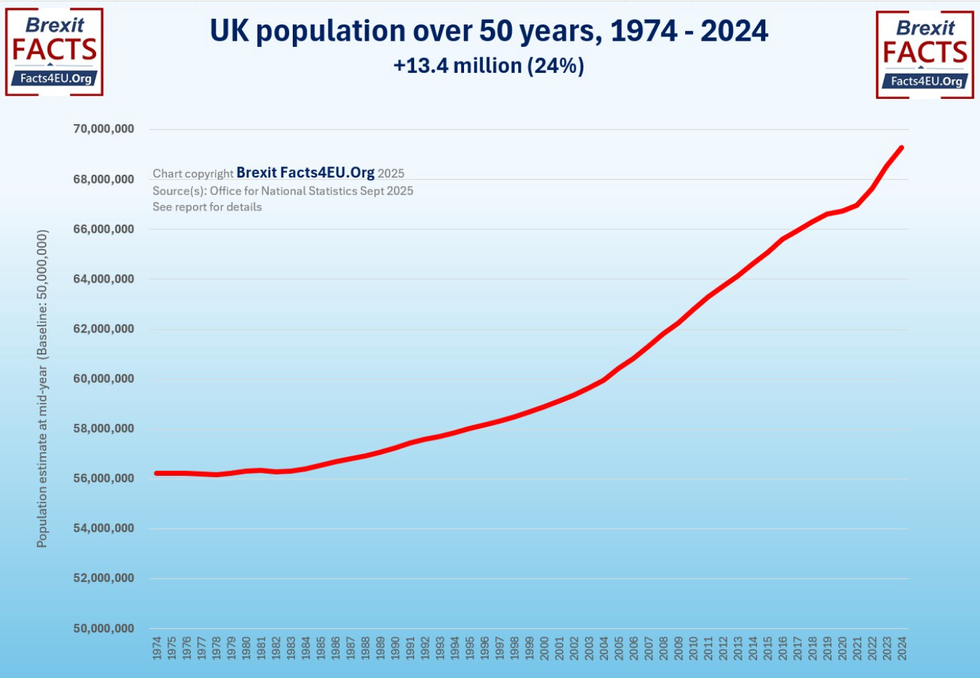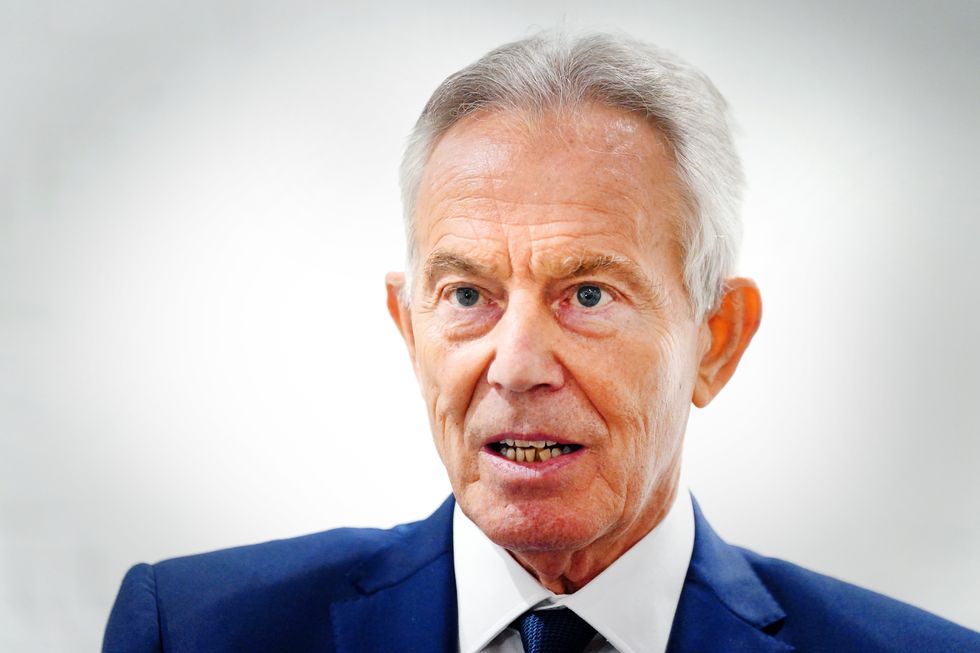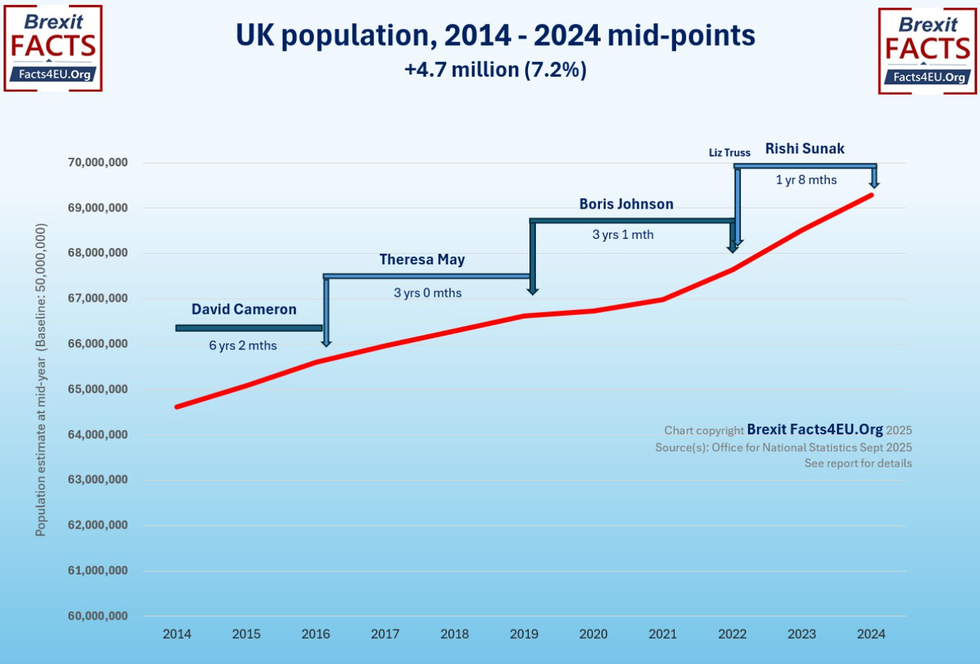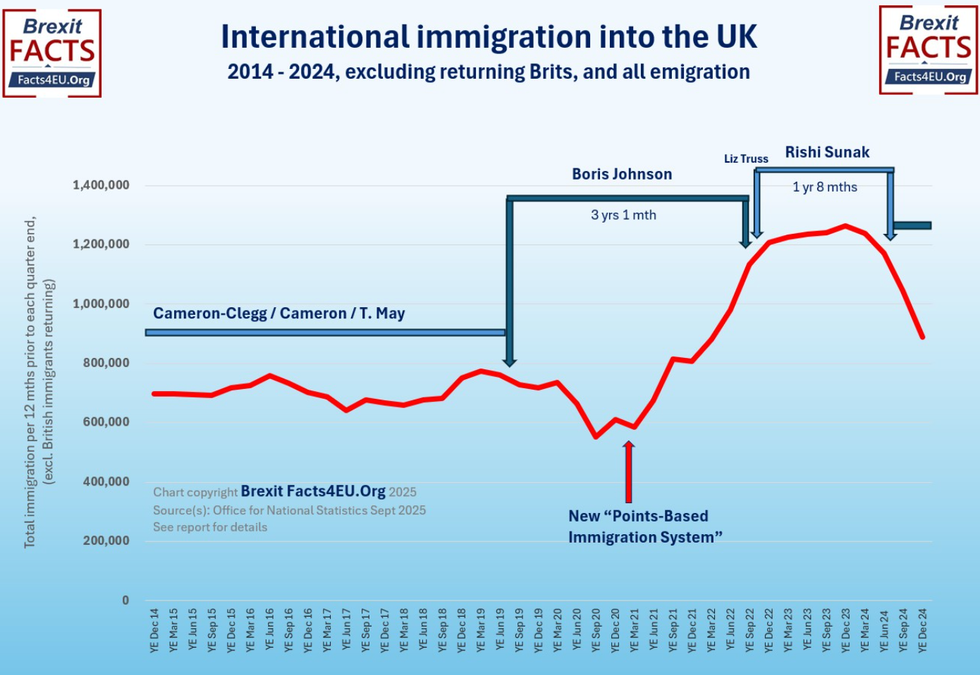



A new report looking at Britain's population explosion through the lens of immigration has revealed the true impact of the country's porous borders.
It comes days after the Office for National Statistics released its latest population figures.
The new ONS figures show that in the year up to mid-2024, Britain’s population had the second-largest annual increase for over 75 years.
However, there are other ways to parse the data.
In the three charts below, Facts4EU takes a radically different approach to population data, including looking at total immigration as opposed to selecting for net immigration – the numbers coming in minus the numbers going out.
When looking at data over the last 50 years, from 1974 to 2024, it shows that over the first 10 years the population stayed broadly the same.
It jumped from 56,235,600 in 1974 to 56,409,300 in 1984.

UK population over the last 50 years from 1974 to 2024
|FACTS4EU
Again, over the next 20 years there was little movement.
It rose from 56,409,300 in 1984 to 59,950,400 in 2004, roughly a 6.2 per cent rise in 20 years.
However, when 10 new countries joined the European Union in 2004, Tony Blair estimated immigrations around 13,000.
That was not the case with hundreds of thousands coming into the country.

Sir Tony Blair underestimated the jump in immigration in 2004
| PARomania and Bulgaria joined the EU three years later and a large number came from each country.
In those 10 years from 2004 to 2014, the UK experienced approximately 4.7 million or a 7.8 per cent jump in population.
In analysing the so-called "Boriswave", the population increased at slightly lower rate - 7.2 per cent - than in the previous 10 years - 7.8 per cent.

UK population from 2014 to 2024
|FACTS4EU
With a country growing by more than seven per cent over a decade it can put enormous strain on resources, prompting the need for better infrastructure and provisions to keep up with the population growth.
As seen in the data, it looks at the growth under David Cameron's leadership as well as Theresa May, Boris Johnson, Liz Truss' short term and Rishi Sunak.
During that period the population jumped by 4.7 million people.
With the vast majority of charts showing net migration, one must take a different approach to analysing the data, by showing the number of foreign nationals immigrating to the UK without looking at the number of people leaving.
At its peak at the end of 2023, total foreign immigration hit more than 1.25 million entering the UK legally.
It was directly attributable to the changes to the immigration rules made by Mr Johnson's Government at the start of 2021.
For many years it had been high, between 600,000 to 800,000 per annum.
The new "points-based system", introduced in January 2021, it opened the doors for people around the world, including dependents, and putting more strain on the country.

As seen in 2021, once the new points-based system came into effect, there was a massive jump in immigration
|FACTS4EU
Rishi Sunak addressed part of the issue and by the end of his term, the numbers began dropping.
While the numbers for 2025 are yet to be released, whether Prime Minister Sir Keir Starmer has continued that trajectory is yet to be known.
